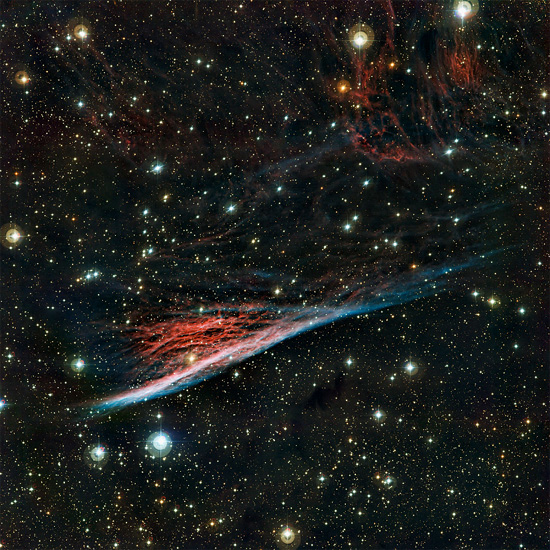Original Post March 19, 2013
This recent image of the Pencil Nebula from La Silla Observatory showcases a cosmic counterpart to “hair” discharges from Tesla coils.
Electric forces separate the plasma into parallel filaments. Magnetic forces further constrict them (the “z pinch”) and induce them to twist around each other, producing a braided effect (plasma “cables”). Each filament is a Birkeland current and therefore part of a larger circuit. The currents continue beyond the visible edge of the nebula in “dark mode”: The current density is not high enough to make the plasma glow. In the visible region, either the plasma density has increased or the electric field has become stronger, producing enough charge carriers to push the plasma into “glow mode.”
This common effect studied in plasma labs is unknown (or ignored) in astrophysics, due in large part to a taboo against electricity that became institutionalized in the early years of the 20th century. “You can’t get charge separation in space” became a dogma that has turned a blind eye to the flood of electrical data from the space age.
Deprived of the simple explanation for electrical effects, astrophysicists had to find ways to explain them with gravity, collisions, and explosions—metaphorically, by banging rocks together. In this constricted lexicon, streetlights must be powered by falling rocks. The Pencil Nebula must be the remnant of an exploded star, whose spherical shock wave collided with interstellar gas, somehow produced parallel braided filaments, and ionized hydrogen and oxygen atoms without changing the gas into plasma.
If the nebula did originate in an explosion, it would have been an exploding “double layer” that powered an expanding loop of current, which is likely driven still today by the galactic circuit to which it is coupled.
Mel Acheson













